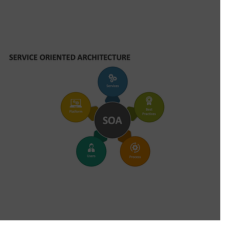The Open Group, OASIS, and OMG’s SOA standards state that the foundation of SOA is architecture. This indicates that it permits arbitrary implementations that may or may not make use of specific technologies, such as REST or Web services. A SOA does not only use Web services or REST, according to the SOA Standard Navigation white paper, which was jointly approved by OASIS, OMG, and The Open Group in 2009. A single architecture can also be implemented in a variety of ways.
Instead of being concentrated in development, the majority of SOA’s abilities are found in the fields of architecture and design. Any inference regarding expertise in “SOA implementation” would therefore be nothing more than conjecture. Let’s say we have a programme that implements crucial but difficult business logic. This logic should be applied to new jobs, and at the same time, it should be turned into a service in the SOA sense. Unfortunately, too many individuals will declare they implemented SOA by attaching a Web service interface to their application. It’s not true, though.
They had to first confirm that the application could manage a flow of queries akin to the Web (what if the application wasn’t actually multithreaded?). The attaché Web service will then generate… the same application with a new Web service interface, nothing more, but this has nothing to do with service-orientation, even if the application is ok with handling many concurrent requests. The application is still not service-oriented and does not follow service-oriented design principles.
As an alternative, some individuals develop a different lightweight application that functions as a true service and makes use of the application’s behaviour and information models. Because we have a service in the SOA sense that offers necessary business capabilities via its resource, we can say that this is the service-oriented solution. How do these things, nevertheless, connect to clouds? The type of cloud, such as IaaS, SaaS, or PaaS, will determine the answer.
IaaS (Infrastructure as a Service), leasing, and renting are not actually services. The client utilises an infrastructure in the same way whether it is in its own data centre or someone else’s data centre. The virtualization of hardware resources is a method of use rather than a service. IaaS is therefore concerned with infrastructure ownership. Even though IaaS elasticity is important to the client, it is hidden from the client’s perspective, and the price the client pays for IaaS remains constant regardless of how elastically the resources expand or contract. Instead, the price may vary depending on how the resources are used, regardless of their elasticity.





